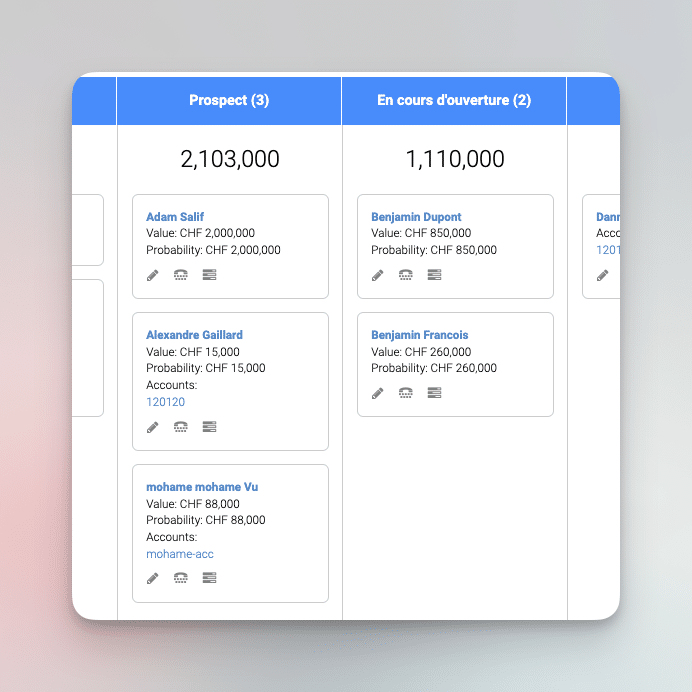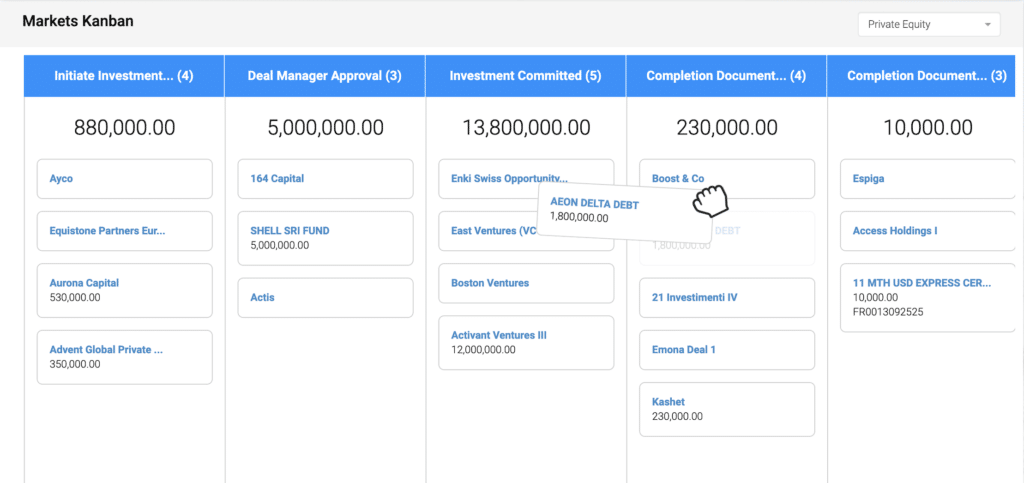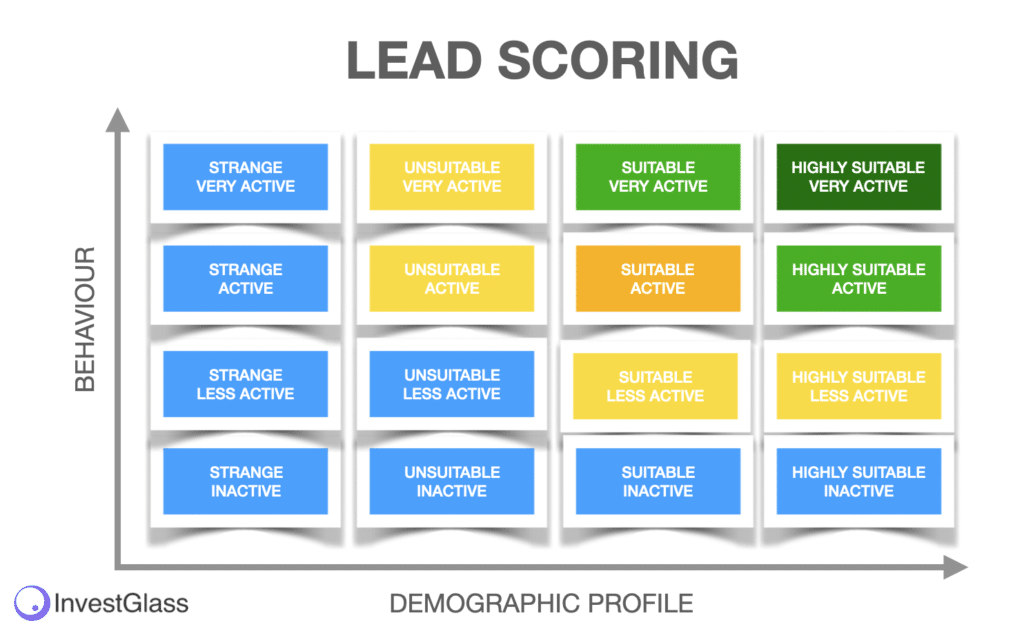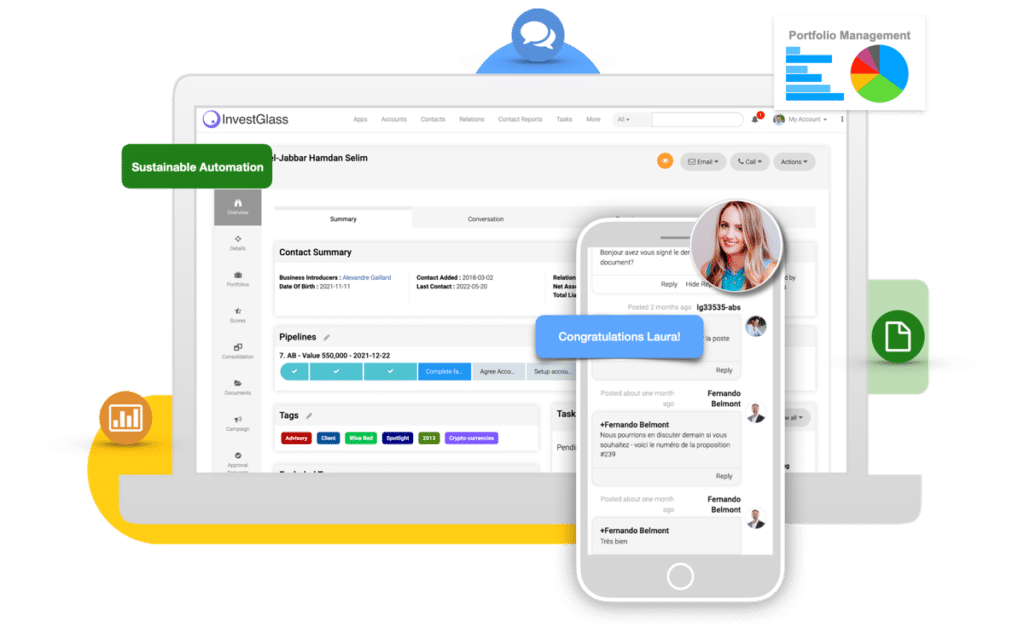How to Build Sales Pipeline for Maximum Revenue

An organized sales pipeline is crucial for maximizing revenue and enhancing transaction productivity. Companies with clearly defined pipelines experience 18% higher revenue growth compared to those without structured processes (HubSpot). By effectively visualizing sales stages, identifying bottlenecks, and accurately forecasting outcomes, businesses can boost their sales team’s efficiency and drive consistent income growth.
Key Takeaways
- Sales pipelines are essential for tracking prospects, forecasting revenue and optimizing the sales process.
- Strategies such as identifying target audiences, defining a sales process and leveraging technology can help optimize pipeline performance.
- Common mistakes like inadequate lead generation or prolonged sale cycles should be avoided to ensure maximum revenue.
The Importance of a Sales Pipeline

A sales pipeline, otherwise known as a sales funnel, provides a visual depiction of the various stages in the sale cycle. It can show data like number of deals and expected revenue which are useful for both teams and managers to observe their own progress or compare it with others. A robust version enables reps to determine where resources should be allocated most efficiently so they focus on high-value opportunities while allowing supervisors an insight into team performance overall. This kind of tool gives everyone involved access to key details such as value and prospects that need tracking thus making sure smart decisions related to optimizing the process at hand are made accordingly throughout its course.
InvestGlass is a powerful tool that can greatly enhance your sales process. The company’s sales pipeline is effectively managed using this system, allowing for a more streamlined and efficient workflow. The sales pipeline stages vary, and InvestGlass allows you to customize these stages to best suit your business needs.
For instance, if you have a long sales cycle, InvestGlass can help manage and track each step, ensuring no potential sales fall through the cracks. It allows you to monitor the average sales cycle length, providing valuable data that can be used to further optimize your process.
Additionally, InvestGlass offers the ability to conduct comprehensive sales pipeline reviews. These reviews can provide insight into areas that are performing well, as well as those that may need improvement. This level of analysis is crucial for the ongoing success of your sales pipeline.
Benefits to Sales Teams
A sales pipeline that is structured and tracked with precision gives the opportunity to maximize efficiency for sale teams, allowing them to make data-informed decisions in order reach their targets. By making use of accurate tracking and having a clear view on tasks, objectives and progressions, it can lead to improved productivity as well as more successful deals being closed.
For sales teams, understanding their own sales pipeline is key to their Key Performance Indicators (KPIs). The company’s sales process is a significant element of this pipeline, with each pipeline stage representing a crucial step towards closing a deal.
Sales leaders need to ensure that their teams are aware of the importance of each stage in the sales process. From identifying sales prospects to nurturing leads and closing deals, each step contributes to the strength of the sales pipeline.
A strong sales pipeline is a reliable indicator of future revenue. By keeping track of the average deal size and the average win rate, sales teams can better forecast revenue and set realistic sales targets.
Moreover, the entire sales pipeline needs to be managed and optimized to ensure that sales efforts are directed towards the most promising leads. This not only helps in achieving revenue goals but also improves the efficiency of the sales process.
Benefits to Sales Managers
Sales managers are enabled to make well-informed decisions concerning the sales process by taking advantage of pipeline data and viewing its visibility. Doing this grants them an opportunity to evaluate their team’s success on a month, quarter or yearly basis as well as examining each individual employee’s performance in order that resources can be distributed accordingly with maximum efficiency.
Building a Sales Pipeline: Key Components

To create a sales pipeline, you should begin by determining your target market and drawing up the necessary steps in the sales process with set revenue objectives. This will ensure that you follow an organized and successful plan of action to close deals for greater performance outcomes.
The primary part of putting together a sales pipeline involves creating an index or list of potential customers from various sources such as analytics tools, customer feedback surveys/reports, CRM system data etc., which are all designed to give insight into your buyers’ wants & challenges along with their contact information.
Identifying Your Target Audience
Gaining an in-depth comprehension of your target market is essential to designing tailored campaigns and sales strategies with the goal of converting leads into customers. Through segmenting consumers, creating buyer personas can help you get a clear picture of who is buying from you, allowing for more effective marketing approaches that appeal to them while keeping key concepts like their motivations intact.
Defining Your Sales Process
A well-structured sales process is necessary for equipping your reps with the tools to succeed in closing deals. This clear and ordered plan of action identifies all activities that have to be completed during successful deal completion. Upholding consistency across your team by mandating they follow this same procedure can provide a significant boost towards success for each one of their campaigns. Allowing every individual rep on staff to adhere strictly adhering this same pattern brings maximum returns, so having it clearly established ahead of time is paramount.
Setting Revenue Targets
Sales teams need to be aware of precise revenue targets in order to identify how many deals they must close at each stage of the pipeline. This helps them allot resources and decide which goals are a priority since it is possible for them to calculate what amount of deals needs closure so that these objectives can be achieved.
Designing Your Sales Pipeline Stages

Sales pipeline stages involve various steps in order to help prospective customers make their buying decision. At each point, certain sales activities must be tailored towards achieving the desired goal: from identifying prospects and gathering data about them. Through verifying qualifications for leads, presenting offers. Down to closing won or lost deals.
The whole process consists of six distinct yet closely related parts that form a concrete framework with which sales staff can move people smoothly through the pipeline and secure conversions more effectively than ever before. From prospecting potential buyers at first all way up to Closed Won as well as managing situations when things don’t go according to plan – Closing Lost – there is great value in understanding what activities should take place during those crucial points on journey toward actualizing an agreement between both parties involved.
By efficiently engaging with these predetermined action sequences, customised based upon role plays within customer relations along pipelined stages are optimally leveraged throughout necessary operations essential across varied range of domains such lending transparency into sound procedures confidently established over time resulting in increased gains delivered worldwide!
Prospecting and Lead Generation
Lead generation entails recognizing possible customers, obtaining their contact information and drawing them in with pertinent content and offers. Through the utilization of several lead generation methods such as email campaigns, social media marketing, and content creation one can reach out to a target market to become involved with your business brand while transforming those contacts into qualified leads.
Lead Qualification
The sales and marketing team work together to make sure that only those potential customers with a greater chance of purchasing the product or service are moved forward in the pipeline, thus preserving time and energy. This is called lead qualification. It evaluates prospects based on several key factors like their budget availability, decision-making authority over purchases, need for what’s being offered as well as their readiness to buy. By collaborating closely with sales personnel this process helps efficiently sieve through leads which will ultimately result in more successful conversions down the line.
Building Relationships and Nurturing Leads
Sales reps must create strong relationships with potential customers through tailored interactions, which helps to build trust and offer value. It is vital for the representatives to have insight into their needs and challenges in order to craft proposals that will make sense and lead them towards a successful closure of the deal.
Sales Pipeline Management and Optimization

SUPER CHARGE
Efficient management and optimization of a sales pipeline requires keeping track of key metrics, refining the sales procedure, and adjusting tactics according to data in order to improve general results. Examining as well as analyzing pipelines consistently enables teams in gross sales detect market trends that demand modifications be made with regard to their selling process. With this proactive attitude towards managing the sale’s line-up it is possible for firms’ strategies stay current given fluctuating markets. In addition ,this way businesses can identify potential roadblocks which then lets them generate information supported decisions while aiming for greater income from improved pipeline efficacy .
Monitoring Sales Pipeline Metrics
Monitoring key sales pipeline metrics is an effective way to gain insights into your selling process and improve overall performance. For example, tracking the number of leads you receive, how many turn out to be qualified leads or opportunities and what size deals they are on average helps identify areas for improvement that can increase revenue in the end. Measuring close rates as well as analyzing data related to a typical sales cycle length gives one insight about when best times might be better suited for closing lucrative deals rather than others. By understanding these aspects of your business model Success will come in time with proper implementation based upon results from this data collection initiative.
Refining and Adapting Your Sales Process
Sales teams can stay competitive and productive in an ever-changing market by constantly fine-tuning their sales process through examination of pipeline data insights. By evaluating which tactics are achieving the desired results and discarding those that aren’t, businesses can boost efficiency while increasing overall revenue as they optimize the strategy for improved performance.
Leveraging Technology for Sales Pipeline Success

Leveraging technology, such as InvestGlass CRM system, can greatly improve sales pipeline management with automation and features for tracking and refining it. This type of software offers real-time visibility into the pipeline. Allowing you to filter by team members, representatives or geographic location so that analysis is tailored precisely towards your needs. It even helps detect bottlenecks in the selling cycle enabling you to take action quickly on any issues present therein.
With InvestGlass at its core there are a few unique advantages: firstly blocking out certain steps if they have not been completed effectively, secondly ensuring full compliance with regulations related to customer relations activities during this process, finally providing specific tools meant for managing customer meetings while also handling email campaigns better than before – all things which facilitate progress up each step in the funnel., thereby bringing greater performance through higher efficiency levels when making decisions surrounding sales pipelines maintenance/management.. Integrating an appropriate CRM like InvestGlass should thus result ultimately resulting amplified revenues from optimally managed projects
Benefits of Using a CRM

A CRM system enables sales teams to stay on top of their game, with streamlined processes and data for better decision-making. It allows them to keep leads organized, automate tasks which would otherwise be manual labor, see in real time how the sales pipeline is progressing and consequently become more efficient overall. This helps optimize their efforts by allowing informed decisions while increasing effectiveness at closing deals successfully.
InvestGlass: Unique Features and Advantages
Sales teams seeking to increase their pipeline efficiency and realize greater success should look no Than InvestGlass. Its powerful features allow for sales pipelines to be monitored, maintained in compliance with applicable industry regulations such as MIFID, LSFIN and BASEL while also allowing users the ability to halt progress if a stage is incompletely written out. It provides tools that help manage client meetings and email campaigns, all of which together make investing effortless yet effective!
Common Sales Pipeline Mistakes and How to Avoid Them

Sales teams who fail to understand the needs of their target audience can suffer from a weak sales pipeline with fewer quality leads and subsequent lost opportunities. To avoid this, optimizing lead generation is key. Through strategic marketing initiatives tailored specifically towards its desired customer base as well as personalized sales approaches, it’s possible for any team to boost performance in order to close more deals effectively. Common issues such as extended cycles or inadequate promotion should be acknowledged and addressed so that the flow of prospects continues smoothly throughout each stage of the process – resulting in an improved overall bottom line.
Inadequate Lead Generation
Sales teams need to identify their target audience, create sales procedures and set targets in order to improve lead generation which can be done through the use of modern technologies such as CRM systems like InvestGlass. These solutions enable them to accumulate potential leads more effectively while also keeping an eye on their progress. Not doing so will adversely affect revenue, customer satisfaction and overall sale performance.
Prolonged Sales Cycle
In order to boost revenue and reach desired sales goals, sales teams need to reduce their cycle of selling by optimizing the entire process. This can be done with valuable content designed for different phases of a buyer’s journey as well as an effective response time in regards to potential customers’ issues or concerns. Shortening this procedure will potentially lead towards missed opportunities that could result from lost interest due to its lengthiness. By focusing on these areas, quicker closures are made possible which eventually leads directly into more successful outcomes overall when it comes reaching targets within any given sale situation.
Summary
It is essential to construct a robust sales pipeline in order for teams to boost revenue and close deals successfully. By acknowledging the necessity of an efficiently-structured system, recognizing its components, developing stages within it, and making use of modern technology, organizations can upgrade their sales process while accomplishing remarkable results. Maintaining concentration with data-driven decisions will ensure that your sales excel!
Frequently Asked Questions
What does it mean to build a sales pipeline?
Creating a sales pipeline is the process of constructing an organized, visual framework which outlines prospects at various points in their buying journey. This allows for tracking leads from qualification to closing deals and continued engagement after purchase. It also gives insight into sales personnel’s predictions concerning potential buyers and how near they are to accomplishing goals set by their quota.
How do you build a sales pipeline?
To build your sales pipeline, it’s essential to identify and define your target audience, research the important roles within those companies of interest, as well as organize data by process. When making contact with key figures in these businesses is a must for forming relationships and finding out more about possibilities. All this helps develop an efficient sales pipeline effectively.
What are the 4 stages of sales pipeline?
The sales pipeline includes four distinct stages: beginning with lead generation, followed by nurturing and qualifying leads to become marketing qualified or simply a qualified lead before they are accepted as prospective customers for the closing deal. Post-sale service is also provided after this process.
The InvestGlass team and tools have a significant role in building a robust sales pipeline. The sales pipeline starts with initial contact with prospective buyers. This could be through outbound sales or other marketing efforts. The InvestGlass team provides extensive sales training to its sales professionals to ensure that each potential customer is handled with utmost care and professionalism.
InvestGlass tools aid in mapping the buyer journey, from the first contact to the conversion stage, ensuring a well-defined sales process. This good sales process is essential in guiding the prospective buyer from one stage to the next stage seamlessly.
The InvestGlass CRM system is designed to track sales metrics such as the average deal value, which is crucial in predicting future revenue. With this information, sales professionals can focus their efforts on leads that promise higher net sales.
Another key feature of InvestGlass is its ability to identify a marketing qualified lead. This is a potential customer who has shown enough interest in your products or services and meets certain criteria, making them more likely to become a customer. This identification helps in prioritizing leads and ensures that resources are not wasted on leads that are less likely to convert.
What is a sales pipeline strategy?
The sales pipeline strategy is a course of action taken by the sales rep which accompanies customers throughout their buying process, from initial acknowledgement to making decisions. This approach enables reps to monitor and develop leads as they travel through the funnel. By using this system, it allows for tracking progress while still preserving all pertinent information along with expressions and tone associated in order to obtain an optimal result with each individual customer’s journey.
What is the importance of a well-structured sales pipeline?
Having a clear sales pipeline is beneficial for everyone involved, providing greater visibility and insights into operations while increasing the efficiency of both teams and managers alike. With this system in place, better decisions can be made which leads to higher productivity levels across all groups.
InvestGlass Switzerland is the ultimate solution for automating sales processes in compliance with industry standards. The robust sales pipeline tools offered by InvestGlass SA ensure that all sales activities conducted are in line with the best practices. The platform’s lead scoring feature effectively ranks cold leads, helping you prioritize and convert them into more sales. The sales pipeline refers to the negotiation stage, where the sales pitch is effectively delivered to potential clients. Furthermore, InvestGlass SA provides valuable insights into the pipeline value, helping businesses to plan their strategies more effectively. The platform is also excellent in managing existing customers, ensuring that they remain satisfied and continue to contribute to the business’s revenue.